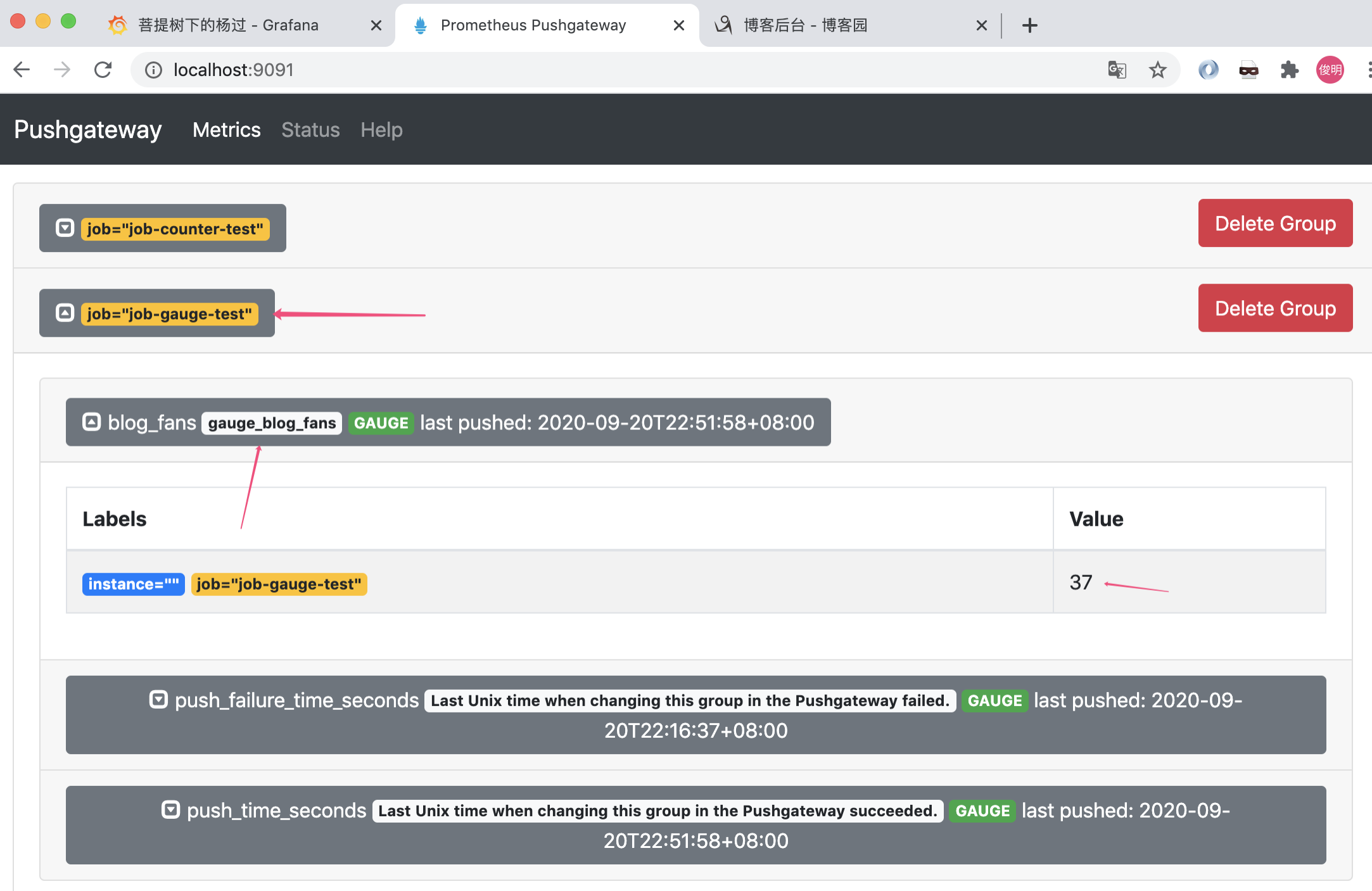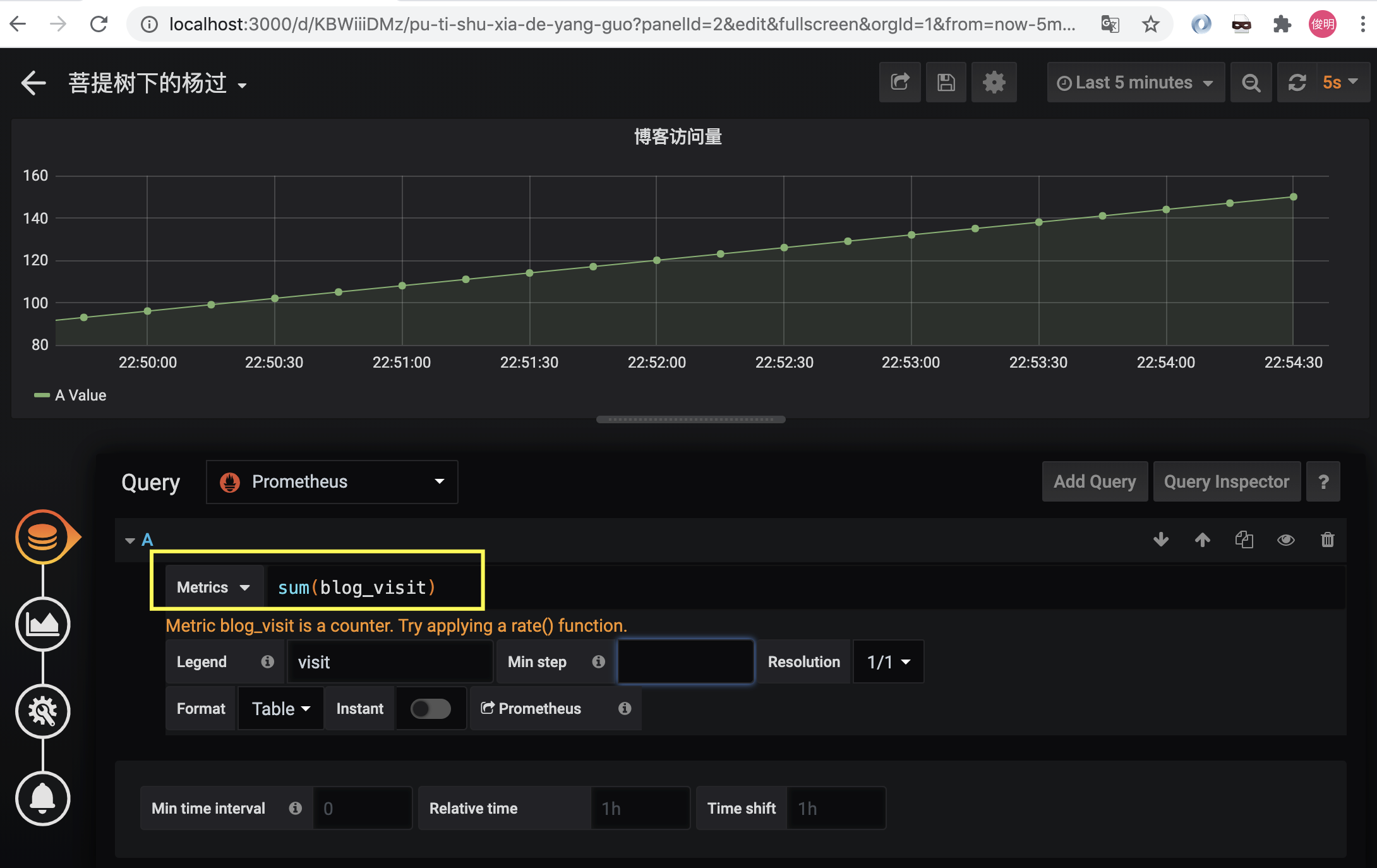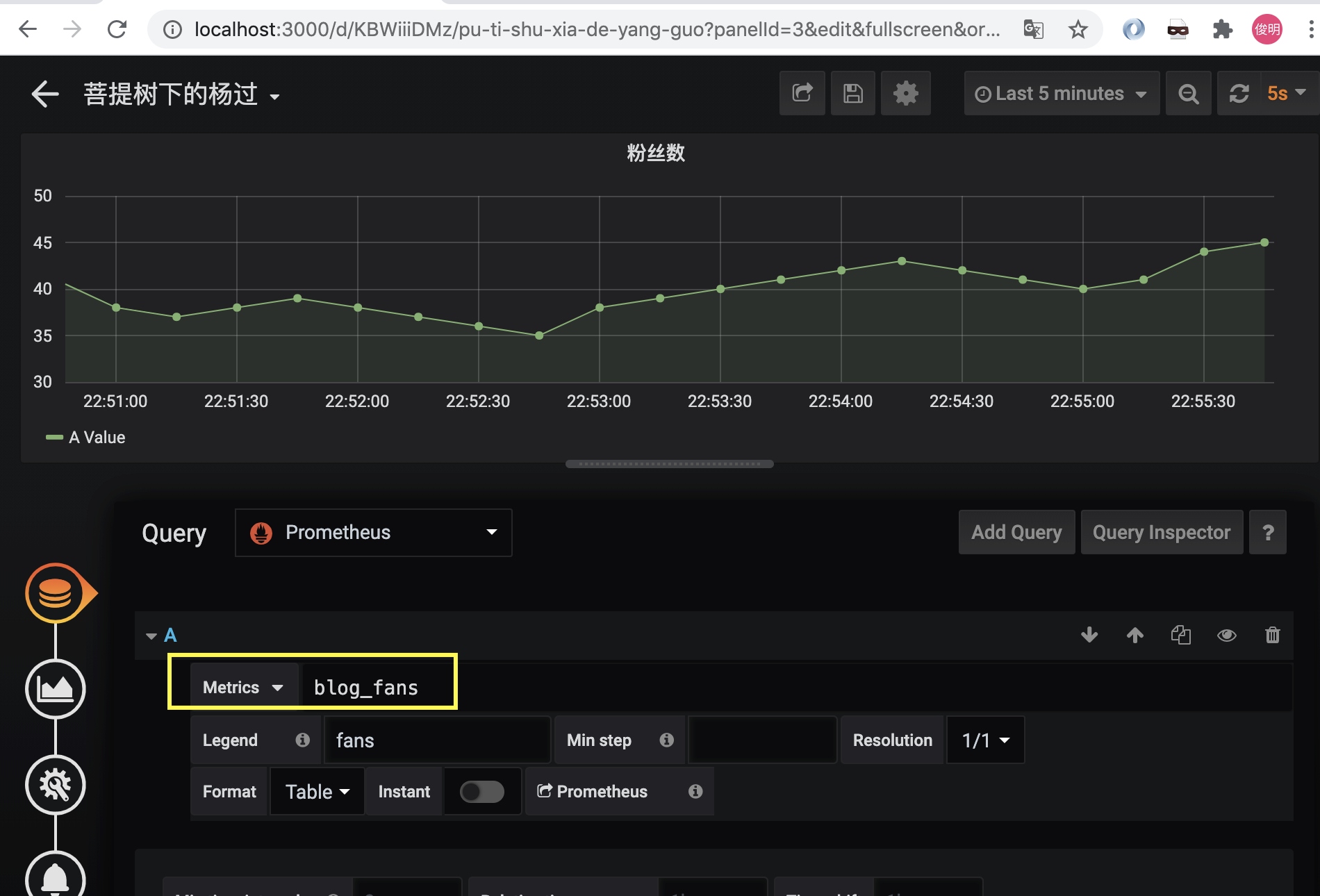继续学习prometheus,上一节演示了用http方式使用curl向pushgateway发送数据,本节将研究如何利用client jar包,以java代码的方式写入数据。
一、依赖的jar包

1 <dependency> 2 <groupId>io.prometheus</groupId> 3 <artifactId>simpleclient</artifactId> 4 <version>0.9.0</version> 5 </dependency> 6 7 <dependency> 8 <groupId>io.prometheus</groupId> 9 <artifactId>simpleclient_pushgateway</artifactId> 10 <version>0.9.0</version> 11 </dependency>
主要就是上面2个(这是最小配置),考虑到我们通常是在spring环境中使用,一般还要加1个spring依赖,完整pom如下:

<?xml version="1.0" encoding="UTF-8"?> <project xmlns="http://maven.apache.org/POM/4.0.0" xmlns:xsi="http://www.w3.org/2001/XMLSchema-instance" xsi:schemaLocation="http://maven.apache.org/POM/4.0.0 https://maven.apache.org/xsd/maven-4.0.0.xsd"> <modelVersion>4.0.0</modelVersion> <groupId>com.cnblogs.yjmyzz</groupId> <artifactId>spring-boot-demo</artifactId> <version>0.0.1-SNAPSHOT</version> <properties> <java.version>1.8</java.version> </properties> <dependencies> <!-- spring应用最小依赖--> <dependency> <groupId>org.springframework</groupId> <artifactId>spring-context</artifactId> <version>5.2.4.RELEASE</version> </dependency> <!-- The client --> <dependency> <groupId>io.prometheus</groupId> <artifactId>simpleclient</artifactId> <version>0.9.0</version> </dependency> <dependency> <groupId>io.prometheus</groupId> <artifactId>simpleclient_pushgateway</artifactId> <version>0.9.0</version> </dependency> <!-- 下面2个也常用,但在本例中用不到--> <!-- <dependency>--> <!-- <groupId>io.prometheus</groupId>--> <!-- <artifactId>simpleclient_hotspot</artifactId>--> <!-- <version>0.9.0</version>--> <!-- </dependency>--> <!-- <dependency>--> <!-- <groupId>io.prometheus</groupId>--> <!-- <artifactId>simpleclient_httpserver</artifactId>--> <!-- <version>0.9.0</version>--> <!-- </dependency>--> </dependencies> <build> <plugins> <plugin> <artifactId>maven-compiler-plugin</artifactId> <version>3.1</version> <configuration> <source>1.8</source> <target>1.8</target> </configuration> </plugin> </plugins> </build> </project>
二、示例代码
package com.cnblogs.yjmyzz.springbootdemo;
import io.prometheus.client.Counter;
import io.prometheus.client.Gauge;
import io.prometheus.client.exporter.PushGateway;
import org.springframework.context.annotation.AnnotationConfigApplicationContext;
import org.springframework.context.annotation.Bean;
import org.springframework.context.annotation.ComponentScan;
import java.io.IOException;
import java.util.Random;
/**
* @author 菩提树下的杨过(http : / / yjmyzz.cnblogs.com)
* 利用client写入prometheus示例
*/
@ComponentScan("com.cnblogs.yjmyzz")
public class SampleApplication {
/**
* push网关
*
* @return
*/
@Bean
public PushGateway getPushGateway() {
return new PushGateway("localhost:9091");
}
/**
* counter实例
*
* @return
*/
@Bean
public Counter getCounter() {
return Counter.build()
.name("blog_visit") //这里模拟博客访问量
.labelNames("blog_id") //博客id
.help("counter_blog_visit") //这个名字随便起
.register(); //注:通常只能注册1次,1个实例中重复注册会报错
}
@Bean
public Gauge getGauge() {
return Gauge.build()
.name("blog_fans") //这里模拟粉丝数(注:这里我们没设置label)
.help("gauge_blog_fans")
.register();
}
public static void main(String[] args) throws IOException, InterruptedException {
AnnotationConfigApplicationContext context = new AnnotationConfigApplicationContext(SampleApplication.class);
//从spring上下文中取出这些实例
Counter counter = context.getBean(Counter.class);
Gauge gauge = context.getBean(Gauge.class);
PushGateway gateway = context.getBean(PushGateway.class);
Random rnd = new Random();
//粉丝数先预设50
gauge.inc(50);
while (true) {
//随机生成1个blogId
int blogId = rnd.nextInt(100000);
//该blogId的访问量+1
counter.labels(blogId + "").inc();
//模拟粉丝数的变化
if (blogId % 2 == 0) {
gauge.inc();
} else {
gauge.dec();
}
//利用网关采集数据
gateway.push(counter, "job-counter-test");
gateway.push(gauge, "job-gauge-test");
//辅助输出日志
System.out.println("blogId:" + blogId);
Thread.sleep(5000);
}
}
}
代码运行起来后,可以通过http://localhost:9091,确认job是否执行成功
三、配置grafana图表
写入成功后,grafana里就能识别出这2个指标了:
参考文章:



